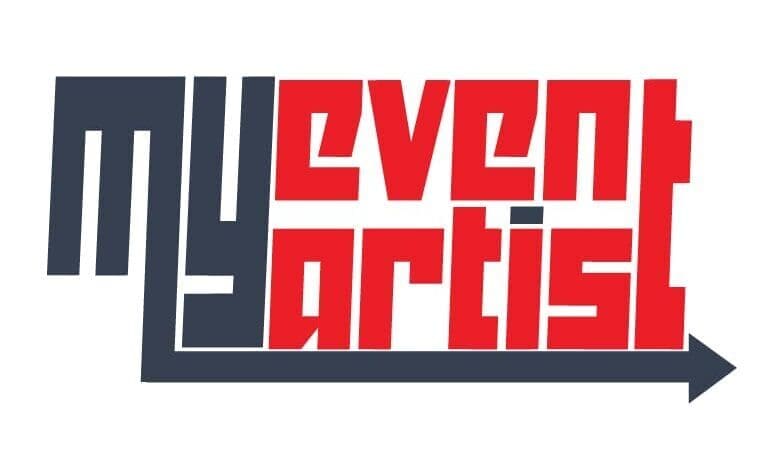Creating a distinctive logo for any sporting event is just the beginning of the design journey. Once you’ve crafted your logo in Adobe Illustrator, the next crucial step is ensuring it is exported correctly for various uses. The formats and settings you choose can significantly impact the logo’s appearance across different media—be it on a digital platform, printed materials, apparel, or signage.
At My Event Artist, we specialize in providing high-quality logo design services for event organizers, T-shirt businesses, and apparel brands tailored to the sporting industry. In this comprehensive guide, we’ll walk you through the best practices for exporting your logo in Illustrator, ensuring that it maintains its quality and meets the requirements for both print and digital platforms.
Understanding the Importance of Proper Exporting
1. Quality Preservation
When logos are created in Illustrator, they are formed as vector graphics, which allow for infinite scalability without loss of quality. However, exporting them improperly can lead to pixelation, blurring, or color discrepancies. Knowing how to export correctly helps preserve the integrity of your design.
2. Medium-Specific Requirements
Different platforms require different file formats and settings. For instance, logos drawn for digital use may require a lightweight format, while businesses will need high-resolution formats for print products. Understanding these needs is essential for effective communication through your logo.
3. Consistency Across Applications
A logo is often used in multiple contexts, from business cards and promotional materials to social media and clothing. Ensuring consistent quality and appearance across all these media is crucial for maintaining brand recognition and integrity.
Step-by-Step Process for Exporting Your Logo in Adobe Illustrator
Step 1: Finalize Your Logo Design
Before exporting, double-check the following aspects of your logo:
- Color Accuracy: Ensure that your colors are set appropriately for their intended medium. For digital use, RGB colors are standard; for print, use CMYK.
- Path Simplification: Go through your design and simplify paths wherever possible without losing detail to make file sizes smaller and export faster.
- Alignment and Scaling: Verify that all elements are aligned and the logo is sized appropriately for its intended use.
Step 2: Choosing the Right File Format
Depending on the application, you may need different formats for your logo. Below are the most common file types used when exporting logos, including their primary uses:
- AI (Adobe Illustrator): The native file format, perfect for retaining all editing capabilities and high-quality artwork.
- EPS (Encapsulated PostScript): Good for printing; it can be opened in many graphic design programs and retains all vector properties.
- PDF (Portable Document Format): Useful for print and sharing, PDFs preserve vector quality and often allow for commenting and markup.
- SVG (Scalable Vector Graphics): Ideal for web use, as it is lightweight and retains vector qualities, supporting interactivity and animation.
- PNG (Portable Network Graphics): Great for digital use, particularly for transparent backgrounds. Use high-resolution PNGs for high detail.
- JPEG (Joint Photographic Experts Group): More suitable for photographs; it’s a raster format that doesn’t support transparency but can be useful for certain applications.
Step 3: Exporting Your Logo for Print
When exporting for print, you want to ensure the highest quality and color fidelity:
- Select Your Logo: Use the Selection Tool (V) to select the logo you wish to export.
- Go to Export: Navigate to File > Export > Export As.
- Choose the Format: Select EPS, PDF, or AI from the dropdown list.
- Optimize Settings:
- If exporting as EPS, in the subsequent dialog box, select the proper version (usually, you want to stick with the latest to ensure compatibility) and choose whether to embed ICC profiles for colors.
- If exporting as PDF, ensure that the “Preserve Illustrator Editing Capabilities” box is checked if you want to retain editing capabilities when opening the file in Illustrator later.
- Set Resolution: For raster formats like PNG, be sure to set the resolution to at least 300 DPI (dots per inch) for high-quality print.
Step 4: Exporting Your Logo for Digital Use
For digital uses, focus on optimizing for screen and file size:
- Select Your Logo: Again, select the logo using the Selection Tool (V).
- Go to Export: Navigate to File > Export > Export As.
- Choose the Format: Select SVG or PNG from the options available.
- Optimize Settings:
- For SVG, make sure you check the “Use Artboards” box if you want to export only the area inside the artboard. Keep the settings to ensure the SVG is suitable for production web use.
- For PNG, select the background transparency option if your logo should not have a background. Set a resolution of 72 DPI for standard web use unless a higher resolution is required.
- File Compression: For PNG files, consider compressing files after export for faster loading times on the web.
Step 5: Create Variations of Your Logo
To ensure versatility in your branding, consider creating multiple variations of your logos:
- Full Color: The primary version used in most applications.
- Monochrome: A single color version, useful for presentations or scenarios where color printing is not an option.
- Reversed: A version that works on dark backgrounds, typically with white or light colors.
Best Practices for Exporting Logos
1. Consistent Naming Conventions
Establish naming conventions for file exports. For example, use names that denote the use, such as “TeamName_Logo_Print.pdf” or “TeamName_Logo_Web.svg”. This practice ensures clarity when locating files later.
2. Use Artboards Wisely
Artboards are a great feature in Illustrator to manage your logos and different formats effectively. Create multiple artboards within a single document to export all variations at once.
3. Back-Up Original Files
Before exporting your designs, always ensure that you have backup copies of the original Illustrator files. These files allow you to return to the design if you need to make adjustments in the future.
4. Test and Review Exports
After exporting, check the logos in their intended formats to ensure they meet your expectations. Open them in various applications (e.g., web browsers for SVG, image viewers for PNG) to confirm that everything appears as expected.
5. Prepare for Feedback
Before finalizing designs for clients or releases, gather feedback on how well the logo is perceived across different formats. Sometimes colors and details can appear differently when transitioning from digital design to print.
6. Stay Updated on Design Trends
Just as sport evolves, so does design. Keep up with trends in logo design and color usage specific to sporting events, as these may change over time.
Conclusion: Mastering Logo Exporting from Illustrator
Exporting your logo correctly is an integral part of the design process. By understanding which formats to use and how to optimize your exports for both print and digital usage, you can ensure that your logo retains its quality and integrity across all applications.
At My Event Artist, our goal is to equip you with the resources to make your logo memorable and impactful. We offer a wide range of print-ready vector logo designs, customizable fonts, and more at My Event Artist Shop. If you are looking for a custom logo design tailored specifically to your event’s unique needs, feel free to reach out to us today!
Keywords: logo exporting, Adobe Illustrator, branding, logo formats, design best practices, graphic design
#logoexporting, #AdobeIllustrator, #branding, #logoformats, #designbestpractices, #graphicdesign



Leave a Reply